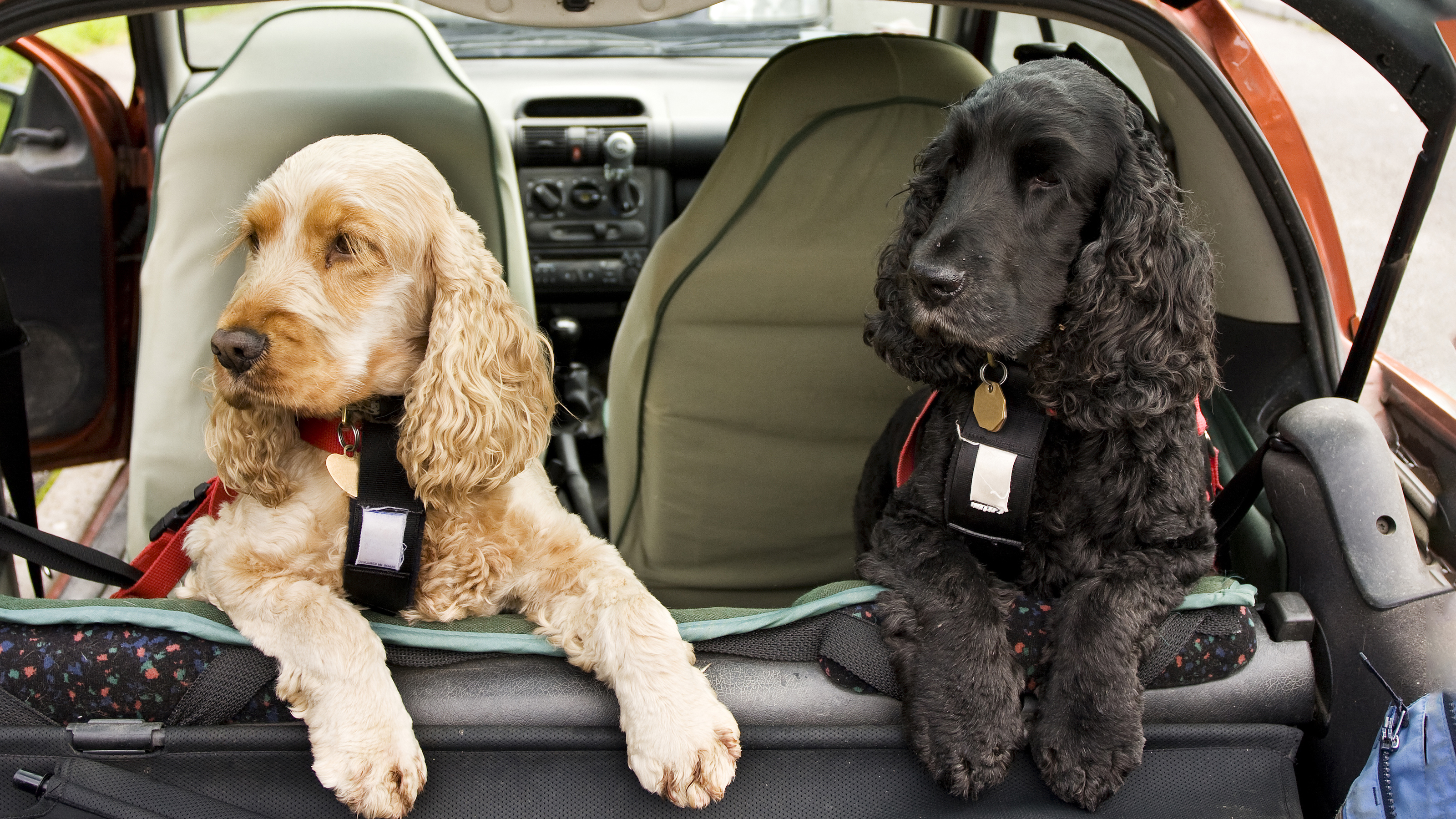
Car Sickness In Dogs
Did you know that dogs can get car sick too?
Just like humans, many dogs make good travellers while others can get anxious and sick on a journey, even a short one to the vet or groomer. Look out for signs such as excessive drooling, panting and swallowing, restlessness and trembling, retching or vomiting. Sometimes just the knowledge that they will soon be getting in the car is enough to trigger the signs.
Spraying pheromone products into your dog’s bedding before travelling, or putting a
pheromone collar on them, can reduce anxiety. Don’t be tempted to try using essential oil preparations. Although these can work for humans, some essential oils can make dogs ill. Sometimes, anxiety and feeling travel sick are linked. If you’re having problems with your dog not travelling well, have a chat with your vet to discuss how they might be able to help.
Travelling with pets can be challenging, but good planning and preparation can make all the difference to your dog.
More about car travel with your dog
Dogs can absolutely get motion sickness, and just like us it is more likely to affect younger puppies than adults. That’s because the ear structures that are involved in balance aren’t as well developed. As dogs age many will outgrow true motion sickness, although some will not and will remain car sick without further help.
The signs of car sickness include:
- Yawning, this is a general sign of anxiety in dogs
- Whining
- Restlessness
- Excessive drooling
- Licking their lips
- Vomiting
If your dog has suffered from motion sickness on their first few car rides, or become very stressed, they will quickly associate car travel with throwing up – not very pleasant! This negative association will be reinforced every time your dog has a poor experience in the car. Being able to literally ‘worry themselves sick’ means it can be difficult to tell worry or anxiety vomiting from true motion sickness.
Dogs can even get motion sick and then vomit due to the worry that this brings on, meaning some cases are a combination of both true motion sickness and stress.
Read about getting dogs used to the car
True motion sickness often leads to anxiety vomiting developing, so you may need to manage both the motion sickness and the resulting negative association with the car. If your dog is truly suffering from motion sickness though it is important to manage this, as it will be very difficult to get your dog to have positive associations with the car while they are still developing travel-related nausea.
As the ‘worry factor’ is such a big part of doggy travel sickness, it is important that you start teaching your dog that car travel and vomiting are not necessarily linked. This can be a slow process, especially if your dog is older and has had this association for some time. Your vet or a trained behaviourist will also be able to help.
Some top tips include:
- Try and keep your dog facing forward, as facing forward has less visual stimulus for motion sickness than looking out of a side window, this might be difficult, so blinds or shades on the side window may also help.
- Keep the air flowing, lowering the window slightly can get fresh air flowing, which can help with nausea.
- Limit food intake for two hours before travel. Having less food in their stomach will make them less likely to vomit.
- Distraction. If you have a passenger who can distract your dog with a favourite toy or with attention, this may help especially on short journeys.
- Medication. Your vet can prescribe anti-nausea medication that may be suitable in the short term, or for use on longer car rides. Consult with your local Companion Care vet to see if anti-nausea medication might be able to help your dog.
- Take a break from car trips for a week or two before you start.
- Change vehicles (if you can) while training to try and create as new an experience as possible.
- Build your dog's tolerance to the car, start by simply feeding/playing in and around the car with the engine off, moving to spending time in the car with the engine on but not moving, and then short journeys.
- Reinforce good behaviour with praise, and small treats, not too many treats though as it is important not to overload their stomach!
- Don't travel anywhere with negative associations during training time. Pick somewhere close your dog really enjoys, such as a park or specific walk. Getting in the car should equal a reward!
- Bring someone along in the car to distract and praise your dog while you drive.
- Don't try and go too fast, if your dog starts looking worried, or vomits, go back a step or two and start again. Never discipline your dog for vomiting as this will only increase their anxiety.
For more advice and support on motion sickness in dogs, speak to your local Companion Care vets and nurses.
